Photography composition is the language of photography. Using different photographic compositions and compositional elements, we can create a visual message for the viewer.
Knowing the different rules of composition is important, but rather than being constrained by a set of guidelines, we should look at the principles of composition and compositional techniques that will help us transform our vision into an image.
In this guide to photography composition, you’ll find all the types of compositions that will make you a better photographer. You will also learn how compositional elements work, and most importantly, you will understand the visual language of photography beyond the typical rules of composition.
To help you navigate through the different compositional techniques and to learn how photography framing works, you’ll also find plenty of photography composition examples.
Ready for composing images in a unique and powerful way?
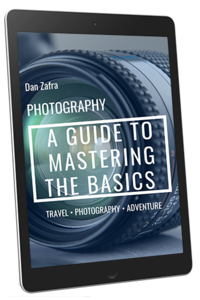
GET OUR FREE EBOOK TO
MASTER THE PHOTOGRAPHY BASICS
20 LESSONS AND 80+ PAGES WITH EXAMPLES, INFOGRAPHICS, TIPS, AND MORE!
What is composition in photography?
Simply put, composition in photography can be defined as the way we arrange the elements in a scene to make them attractive to the viewer. These elements can represent the photographer’s visual message in a harmonious, impactful, and effective way.
The photographic composition follows a series of compositional elements like lines, shapes, space, color… and compositional techniques like the rule of thirds, the golden ratio, the rule of space, etc.
Most of the photographic guidelines of composition are taken from traditional art, specifically painting. However, it’s important to note that rules in photography can be broken, and you can create an impactful and compelling image even if you stray away from the popular “photography rules of composition”.
That said, it’s essential to know all the basics of photography composition including compositional principles and techniques in order to understand the visual language and to use it to your advantage.
These are the main compositional rules and elements in photography:
1. RULE OF THIRDS – One of the basics in photography composition
The rule of thirds is one of the composition basics.
According to this photo composition rule, if we divide the frame vertically and horizontally in 3 equal sections, we should place the important elements of the image on the lines or at the intersections of the lines.
The rule of thirds is a very simple and effective way to frame your composition, and today most digital cameras include compositional grids divided into thirds for composing images.
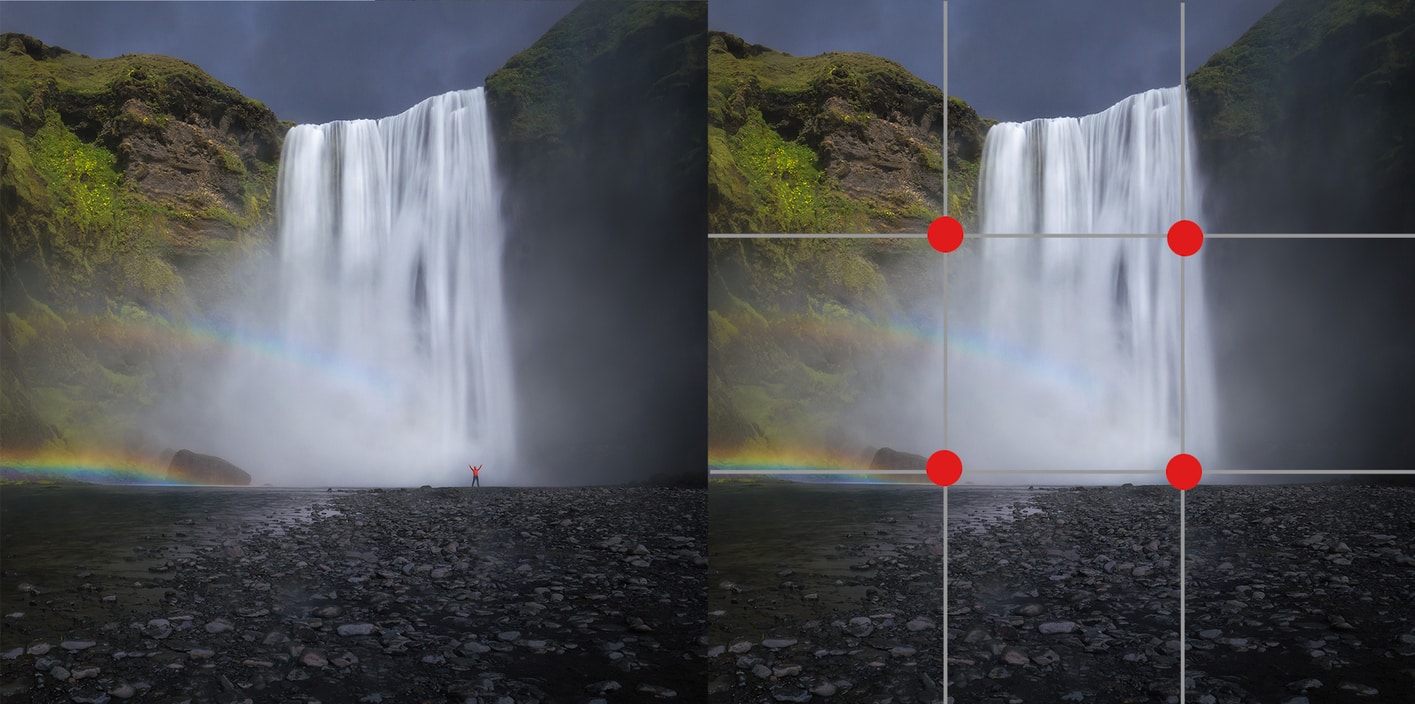
1. Rule of Thirds
You can see more information and plenty of examples of the rule of thirds (and how to break it) in our rule in thirds in photography guide!
2. Compositional lines – An effective way to lead the viewer’s eye
Using compositional leading lines is one of the most powerful guidelines of composition to lead the viewer’s eye towards the important elements in your frame.
This is one of the best tips for photography composition included in most photography composition books, and for good reason; it’ll be easier to take the viewer on a visual journey through your photograph using compositional lines.
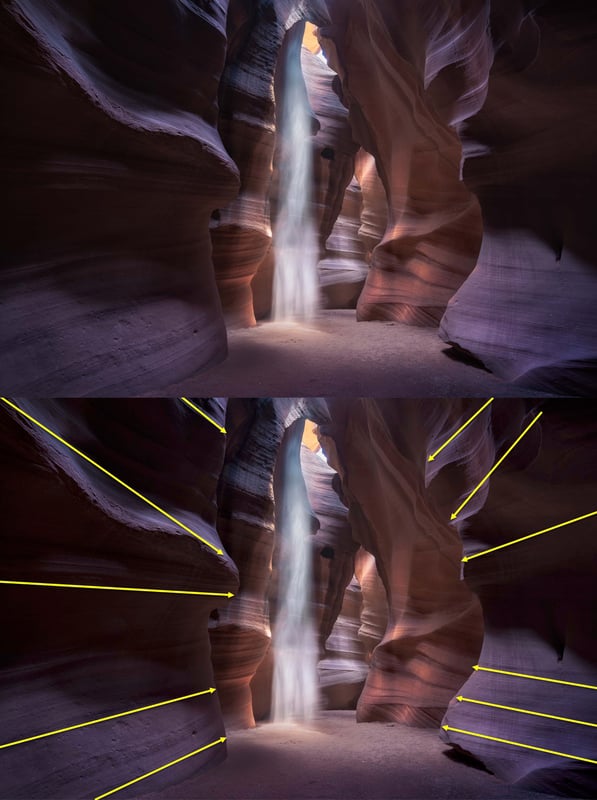
2. Compositional lines
3. Photography Framing – A good composition technique to simplify
It might sound redundant, but one of the most striking framing techniques in photography is to frame within a frame in your composition.
This frame can be natural or artificial, but the goal is the same; to improve the photography composition by focusing the viewer’s eye on the important elements.
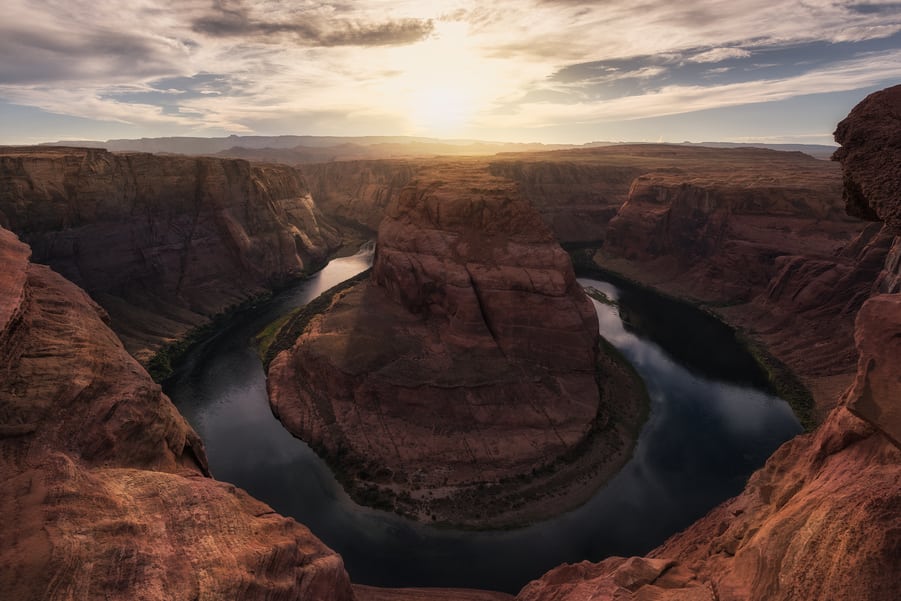
3. Photography framing
4. Balance – A fundamental guideline of composition
Balance in photography composition refers to how the elements in your photograph relate to each other within the frame while considering their visual weight and maintaining equilibrium.
In a balanced composition, some visual elements have greater visual weight than others, so it’s important to strike a balance between the colors, shapes, space, and other compositional elements that we’ll be covering below.
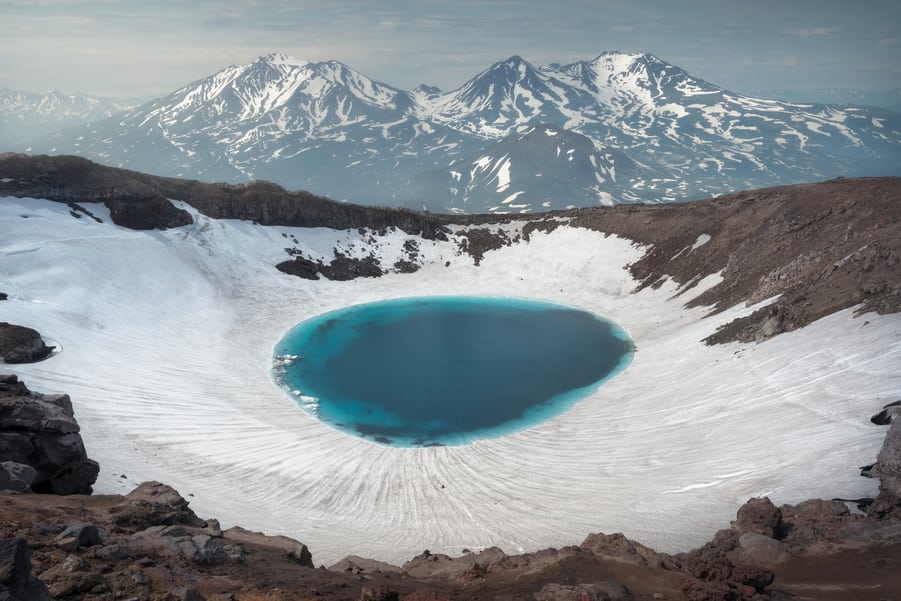
4. Balance
5. Golden triangle – A classic rule of composition
The golden triangle is another of the most popular photography rules of composition. It’s also been one of the main basics of composition in photography and visual arts for centuries.
According to the golden triangle principle, if we draw a diagonal line from corner to corner and two perpendicular lines from the remaining corners, the frame is divided into four triangles of two different sizes. Following this rule, we can use this division to place the subject in one of the triangles or to place our leading lines on the diagonal lines.
One of the best ways to understand photography composition is to look at classic paintings. The golden triangle is a good composition example used by the old masters.
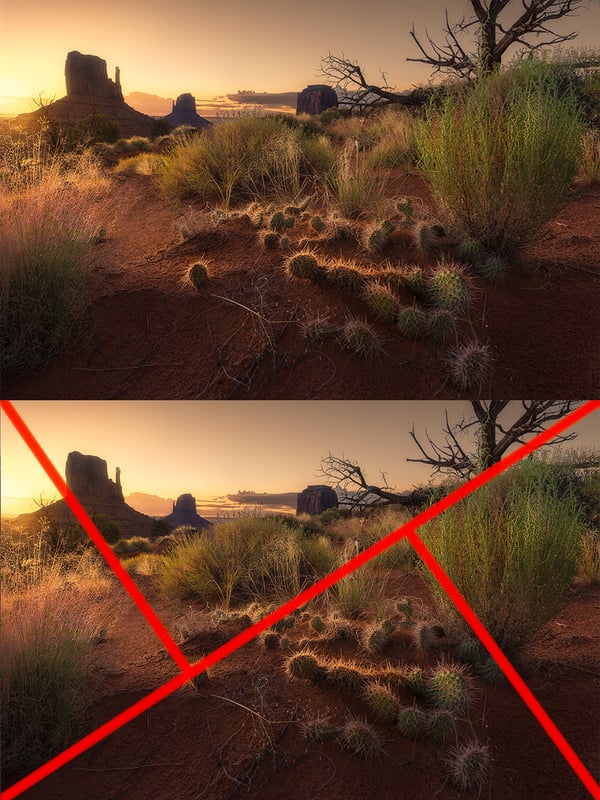
5. Golden Triangle
6. Curves – The type of composition you need to create interest
If you want to create a more interesting “visual journey” for the viewer, introduce curves in your composition.
Curves are strong compositional lines that add depth and are easy to implement, making them one of the most common photography composition tips for beginners. There are many different types, but the “S” shape is one of the most powerful compositional curves in photography.
Rivers, roads, buildings… there are endless elements to include as curves in your photographic composition.
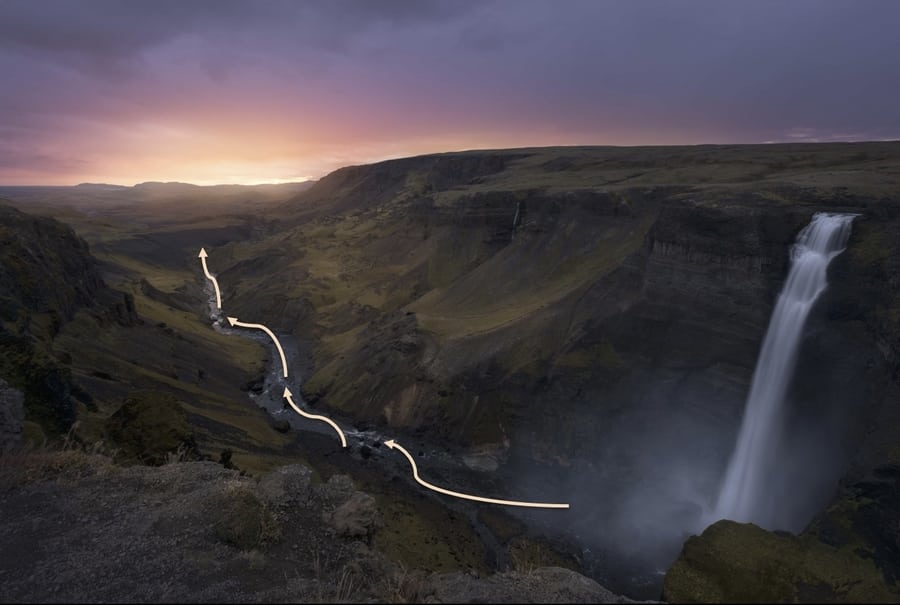
6. Curves
7. Background – The best way to avoid compositional distractions
One of the most common photography composition mistakes is to place the subject against a cluttered background. This will distract the viewer and will make your image less visually appealing.
To use this element of composition, try to place your subject against a clear background, or use a narrower depth of field to emphasize the subject against the background. This is also one of the best compositional portrait tips.

7. Background
8. Golden Ratio/Spiral – A classic composition guideline that never fails
The golden ratio or golden spiral is another classic rule of composition that can help you improve your photography composition skills.
This photography rule of composition follows what is known as the “golden number” or Greek “phi number”, which is simply a ratio of 1 to 1.618. This proportion has been used since ancient times, and it’s widely applied not only in photography but also in architecture and design.
In terms of photography composition, by using this number we can arrange the elements in an aesthetically pleasing way. To do so, the easiest way is to use two shapes that follow this compositional rule, the golden rectangle, and the golden spiral. Place the subject where the golden spiral’s curl would be.
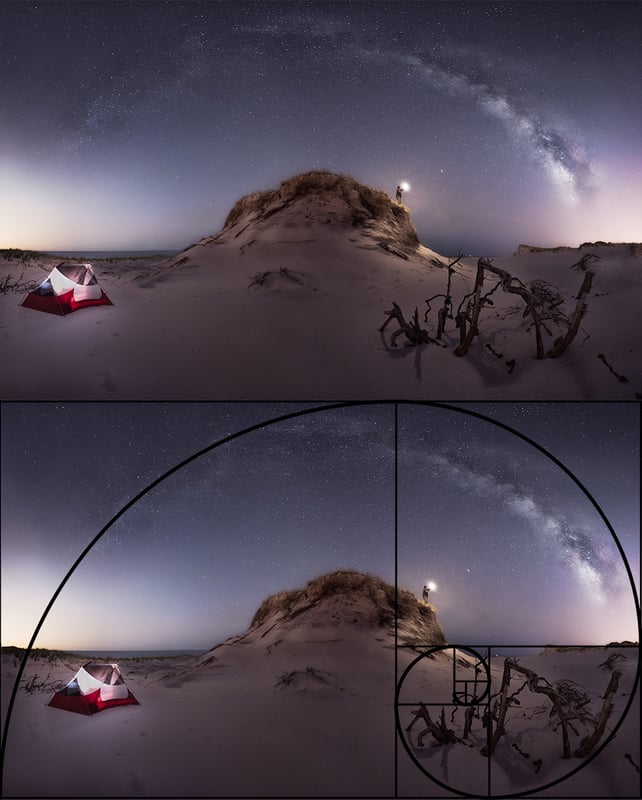
8. Golden Ratio/Spiral
9. Symmetry – The easiest way to capture a balanced composition
Similar to composing balanced images, the use of symmetry in your photographic compositions is one of the best ways to distribute the visual weight across the frame.
The most obvious example is to photograph elements that can produce reflections like lakes, ponds, puddles, and other artificial materials. Looking for patterns is another good way to compose balanced images.
Symmetry is one of the easiest photography compositional elements for beginners, and it can be applied to any genre.
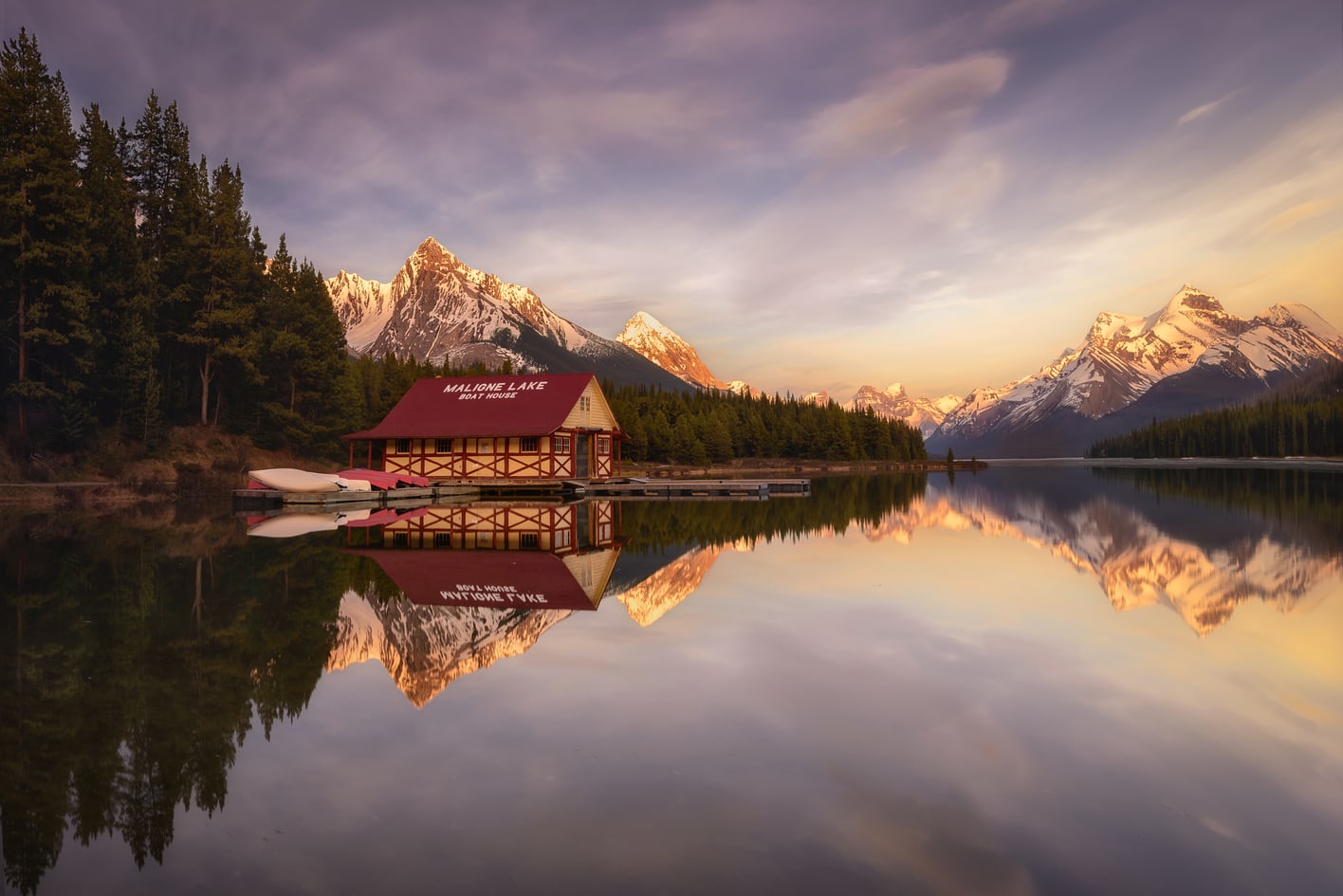
9. Symmetry
10. Repetition – A good composition technique to improve your images
Repetition is an original photography composition guideline to make your images stand out.
Through repetition, we can use colors, shapes, lines, textures, and other elements in the composition to create an attractive visual flow for the viewer.
A good tip for composing a photograph using repetition is to keep your eyes wide open since we can find plenty of repetitive patterns both in nature and urban environments.
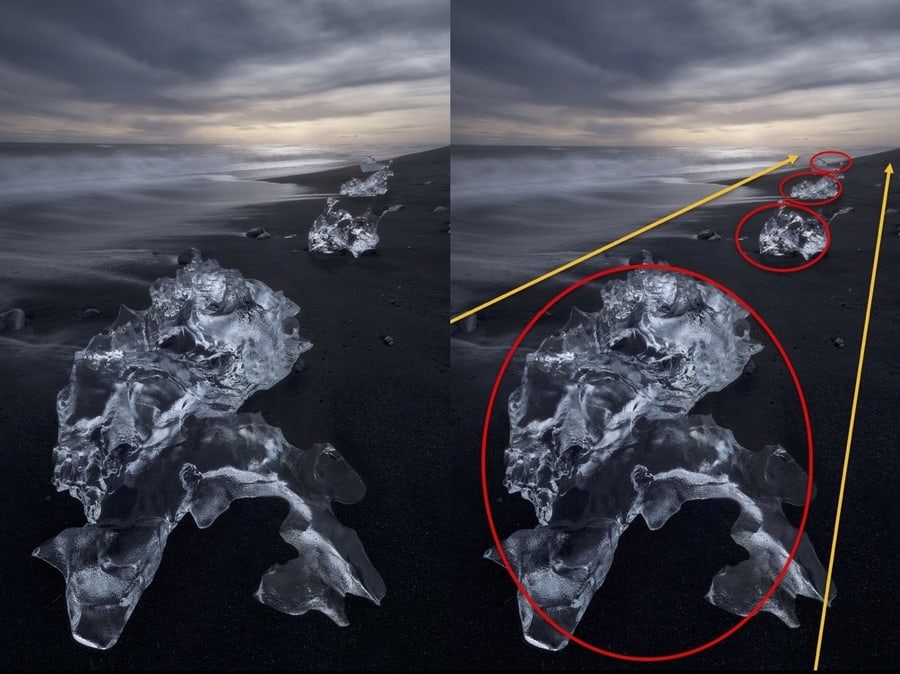
10. Repetition
11. Geometric shapes – Math applied to photographic compositions
Many photography composition rules are related to mathematics, like the rule of thirds, the golden triangle, the golden spiral, and many others. However, you don’t need to bring a calculator into the field to create better compositions using these rules.
A good photography composition example are geometric shapes. Look for triangles, circles, squares, rectangles, and even more complex forms like rhombus or diamonds. The easiest way to find shapes are in architecture, but we can find so many of these compositional elements in nature, too.
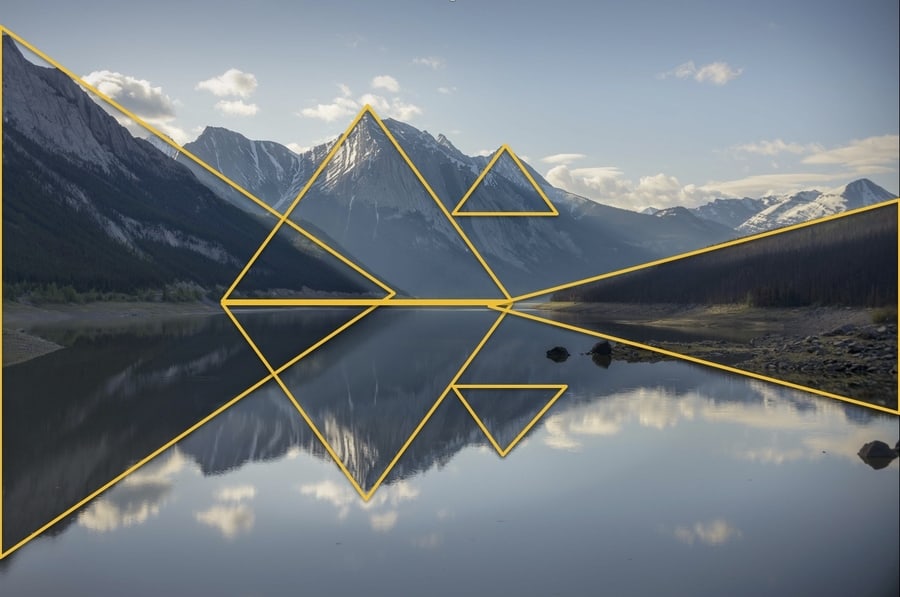
11. Geometric Shapes
12. Scale – One of the most striking compositional rules
A good way to captivate the viewer’s eye is composing images using scale.
Scale is a compositional technique related to the proportion of the elements and how they relate to each other in terms of size, distance, etc.
A good composition tip is to place an element that we can recognize to show a sense of scale, like placing a person or animal against a vast landscape.
We can also use other photography framing techniques like the rule of thirds to place the focal point in any of the “compositional sweet spots”.
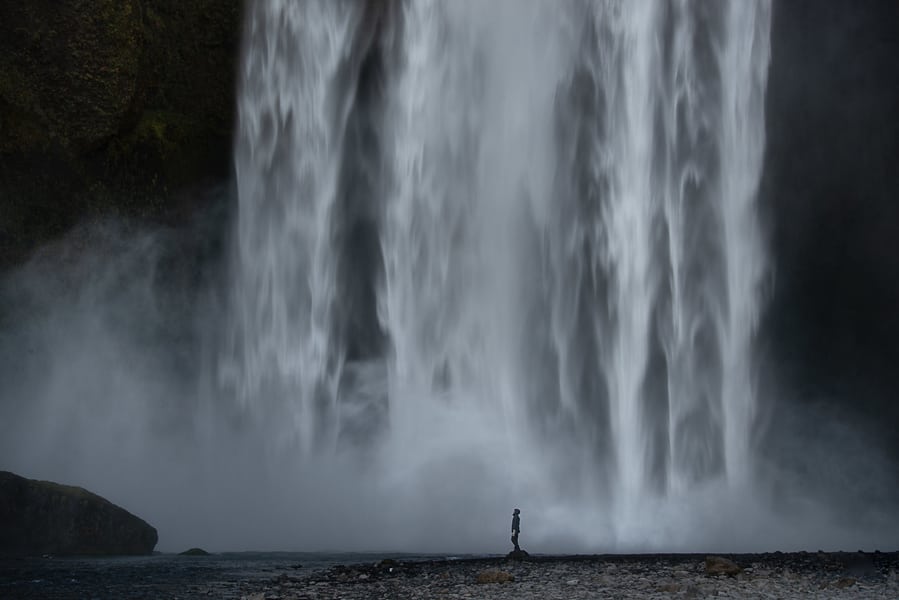
12. Scale
13. Depth – A good composition tip to immerse the viewer in the image
A bulletproof compositional technique is to create depth in your image. Composing a photograph with depth, you’ll create more tridimensionality and the illusion of volume in your image.
There are many compositional elements that help to create depth as we’ll see below. The important thing is to use them in your favor to improve your composition skills and avoid composition mistakes like creating a flat image.
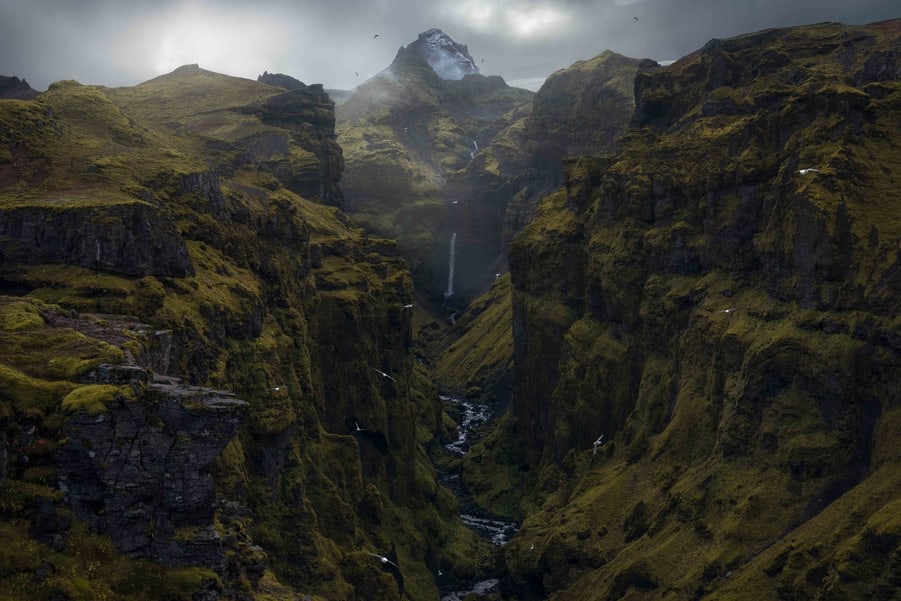
13. Depth
14. Atmosphere – The best compositional element to create etherealness
Atmosphere is one of the key compositional elements in landscape photography to add more depth and interest to your images.
Capturing or enhancing the atmosphere, you’ll get a more ethereal feeling in your photography framing and you’ll make the viewer feel as if they were part of the scene.

14. Atmosphere
15. Layers – A compelling compositional technique to add more depth
Another compositional technique to include in your camera compositions is to compose using layers.
Layers add dimension to the image, creating an illusion of depth and volume.
A good composition photography tip when using layers is to separate the foreground, midground, and background to create a feeling of depth.

15. Layers
16. Color – The most overlooked compositional element
A typical photography composition error is to forget about color.
We tend to think about rules, proportions, shapes, and many other elements when talking about photographic composition. However, Color theory composition is an extraordinary element to creating unique images.
To compose images using colors, try to adjust them following one of the principal color schemes like analogous, complementary, triads, etc. You can also create more depth by separating warm and cool colors. Don’t forget about visual weight; too many vibrant and saturated colors could be distracting.
Another decision related to color composition in photography is to convert the image to black and white. If colors don’t add any interest, sometimes it’s more effective to eliminate them.
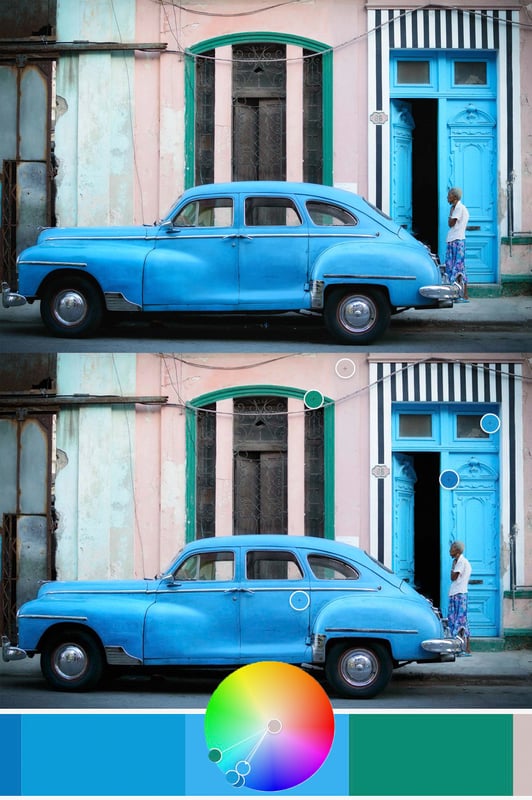
16. Colors
17. Rule of Space – A basic photography rule for beginners
There is no photography composition masterclass where the rule of space is not mentioned. Just like the rule of thirds, it’s one of the basic rules in photography composition, and one of the easiest to implement in your images.
According to the rule of space, you should place your subject so that it’s pointing towards an empty space, creating a sense of motion and space. A typical compositional example in wildlife photography consists of leaving space in front of the animal.
It’s also a good photography composition tip for portraits. You can have a better image by capturing your subject looking at the open space instead of the closest edge of the frame.
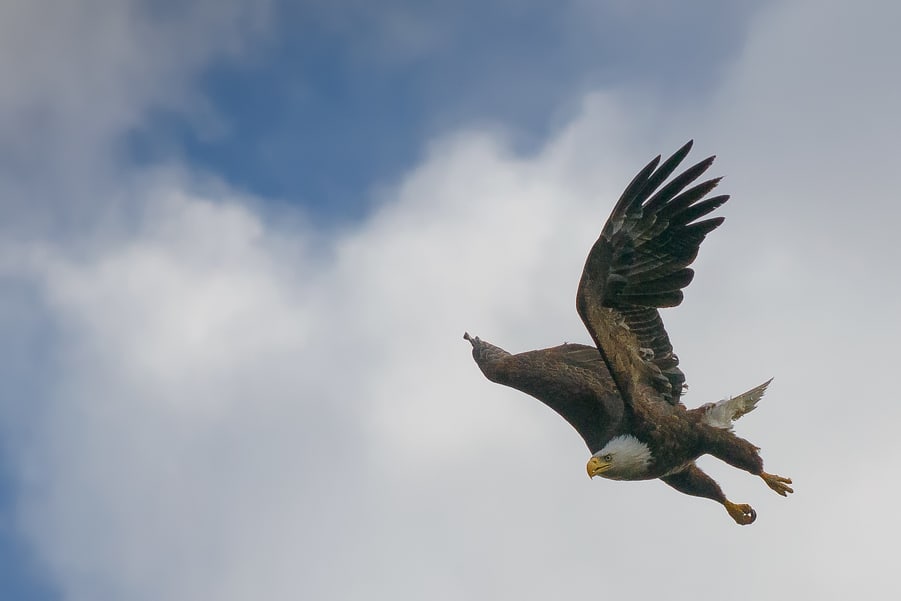
17. Rule of Space
18. Rule of odds – A useful compositional principle
Another easy photography rule of composition is the rule of odds.
This compositional guideline consists of capturing an odd number of subjects to create more visually attractive images, including 3 or 5 elements instead of 2 or 4. The foundation of the rule of odds is related to our subconscious since studies show that odd-numbered groups of things are more visually engaging to our minds.
Take this photography rule of composition with a pinch of salt, since there are plenty of situations where you have to photograph an even number of subjects, like couples portraits or wedding photographs.
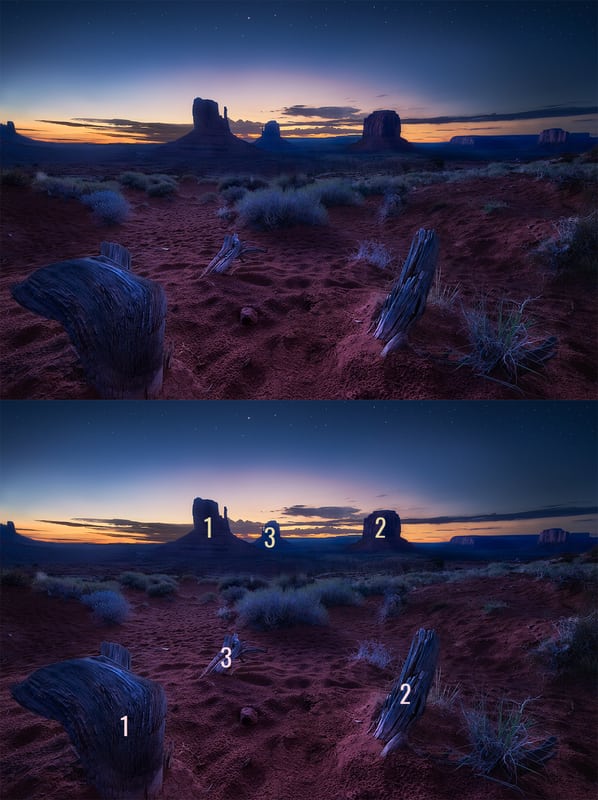
18. Rule of Odds
19. Patterns – The best way to capture abstract compositions
A good compositional technique in photography is to capture patterns to create a more interesting flow in your image.
There are many different types of patterns in photography compositions, like shapes, colors, textures, etc.
Using other photography compositional elements that we already mentioned like symmetry and repetition, we can create very interesting photographic compositions.
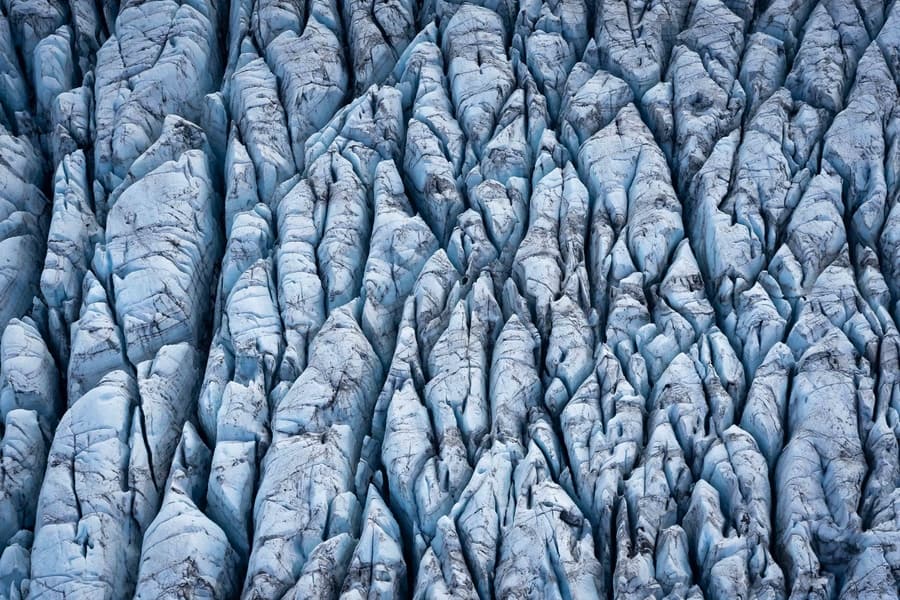
19. Patterns
20. Simplicity – “less is more” in photography composition
There are many types of composition in photography, and one of the most common photography composition errors is to try to include too many elements in the frame.
Simplicity is a crucial photography compositional tip to present your images in a clear and digestible way for the viewer. Practice photography composition by applying the minimalistic approach of “less is more”, and you’ll see how your images become more powerful despite the fact that they include fewer elements.
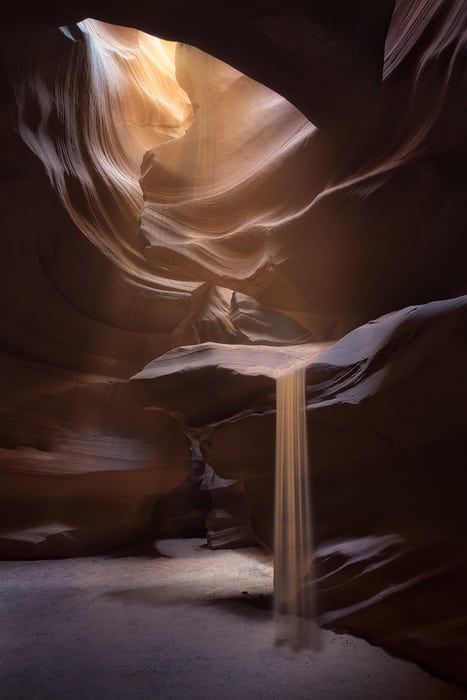
20. Simplicity
21. Negative space – A composition principle to emphasize your subject
When you study photography composition, you can see how many visually compelling images include vast empty spaces where your eye goes directly to the focal point/subject.
Negative space is a photography compositional element that follows the principles of simplicity and focus. It’s one of the best ways to emphasize your subject and lead the viewer’s eye to the essential focal points of the frame.
A useful photography composition tip is to combine the negative space with the rule of space to create more interest.
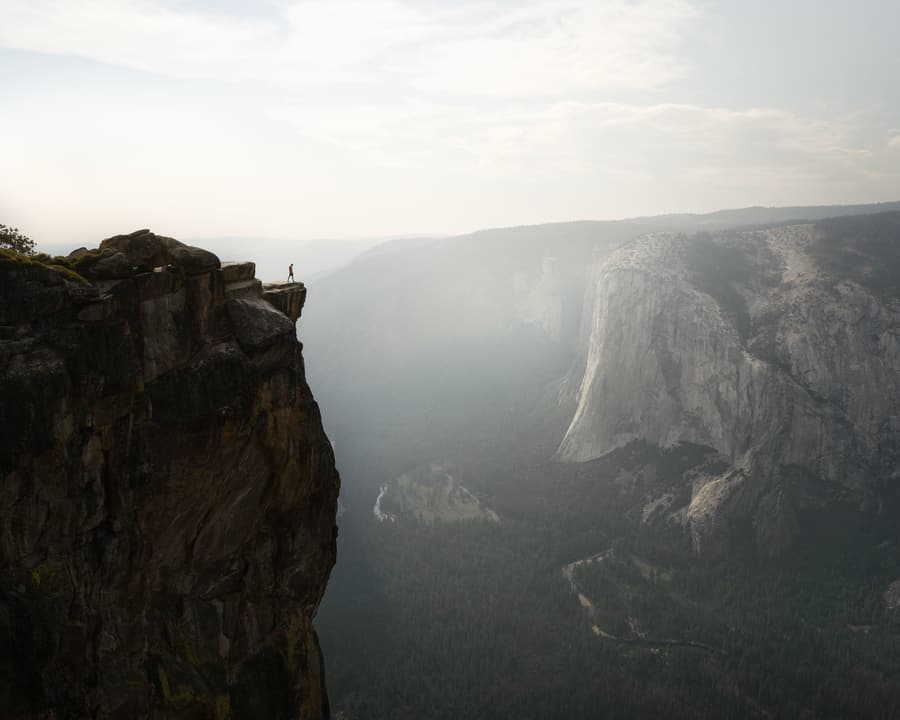
21. Negative Space
22. Cropping – Filling the frame to compose photographs
Contrary to the rule of space, cropping is a photography compositional tool consisting of filling the frame with the subject.
Tellingly, the goal of this photography composition idea is the same as the negative space idea; to emphasize the subject and lead the viewer’s eye to the important elements of the frame.
This is a common wildlife photography composition tip. By cropping the image or using a longer focal length, we can fill the frame with the subject to avoid distractions.
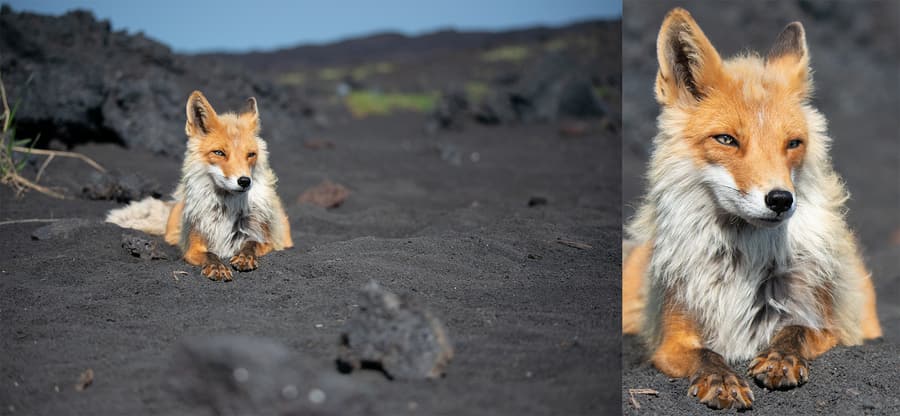
22. Cropping
23. Juxtaposition – A composition technique for more interesting images
Even though juxtaposition sounds like complex photography composition vocabulary, it’s an easy and very effective compositional element.
Simply put, juxtaposition consists of arranging two or more contrasting elements side by side. In photography, you can use it by placing contrary colors, tones, shapes, and even objects or identities to create contrast so the viewer stops to analyze the visual meaning of the image.
Juxtaposition is a very useful element in street photography composition, so don’t forget to keep your eyes wide open!
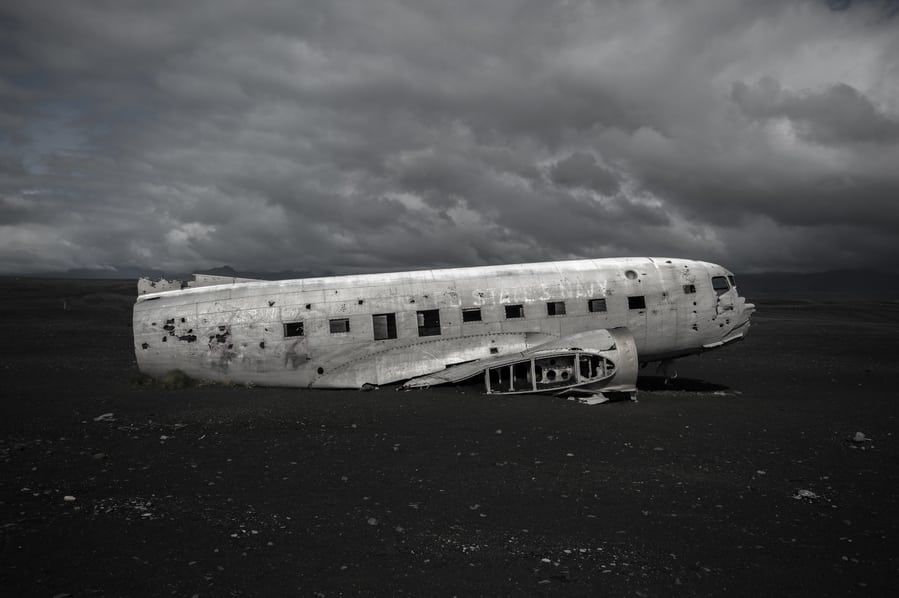
23. Juxtaposition
24. Foreground – One of the best landscape compositional elements
Framing interesting foregrounds in your images is a good photography composition style to invite the viewer to analyze your image.
This doesn’t work in all images, but in certain types of compositions, like in landscape photography. Including a visually appealing foreground is a good way of composing captivating images.
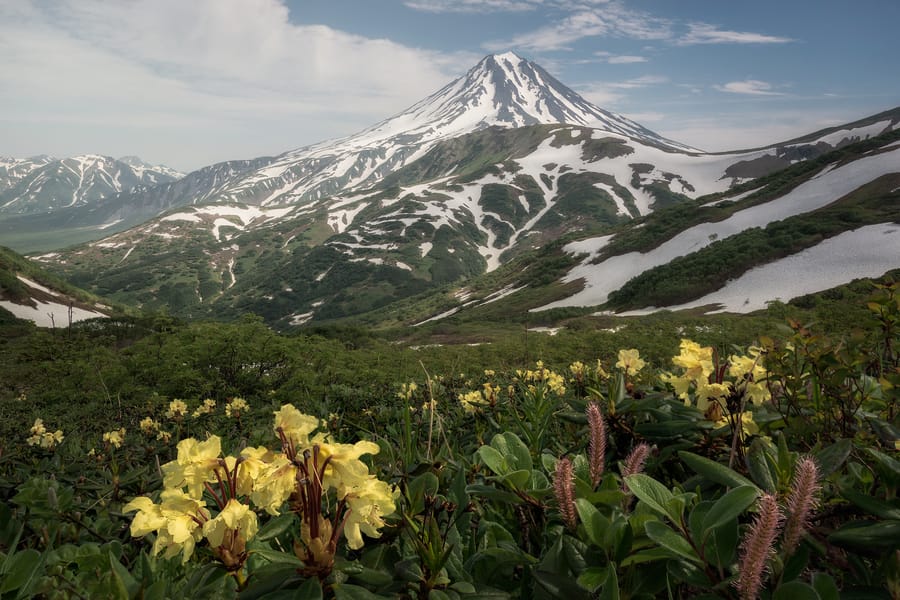
24. Foreground
25. Viewpoint – A good compositional tip to follow
In terms of photography composition, the viewpoint is a key element in the final framing of the image.
When we start photographing, it’s very common to shoot at eye level. However, by changing your viewpoint, even if it’s just a few inches up or down, you can take a completely different perspective.
One of the best photography composition exercises to improve your composition skills is to visualize. Before pressing the shutter and even placing the camera on the tripod, you should look at which perspective looks more appealing to the eye. Then, you can view the perspective through the lens and compose your final image.
A good photographic composition tip is to think outside the box. Apart from moving up and down, tilting the camera, etc., try using different focal lengths to emphasize different elements. For example, you can use a wide angle and get closer to the foreground to strengthen the leading lines or use a drone to capture a completely different viewpoint.
There are no limits in perspective composition in photography!

25. Viewpoint
Conclusion
Beyond expensive camera gear or top-notch processing skills, photography composition is the single most important photography element for creating better images.
Learning the basics of photography composition and the main compositional elements will help you frame what you want to capture in a more harmonious way and create a more appealing image for the viewer.
My last tip for composing better images is to study and practice. Analyze different compositions not only from other renowned photographers, but also from the old school painters. Put everything you learn into practice, and try to continuously visualize compositions, even when you don’t have a camera.
And last, but not least, remember that there are no photography rules of composition; you can create visually compelling images without following the main rules.
To wrap up I just want to share my favorite photography composition quote, from Ansel Adams:
“There are no rules for good photographs, there are only good photographs”
Happy shooting!
PD. You can download/print this article as part of our Photography basics PDF guide.
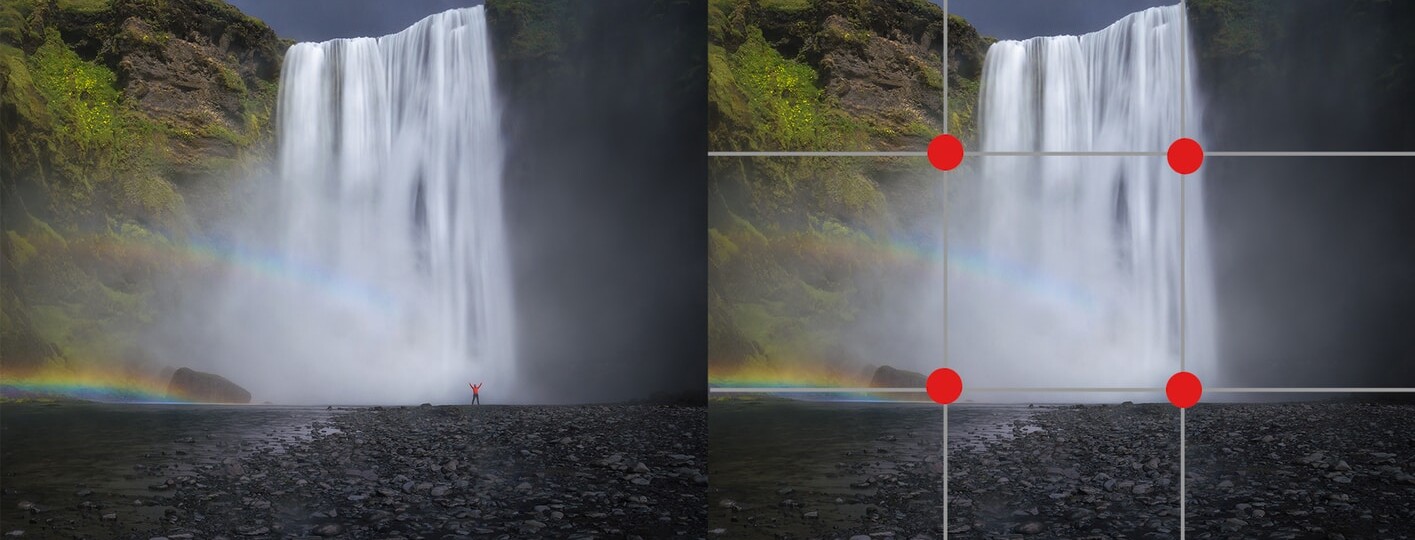
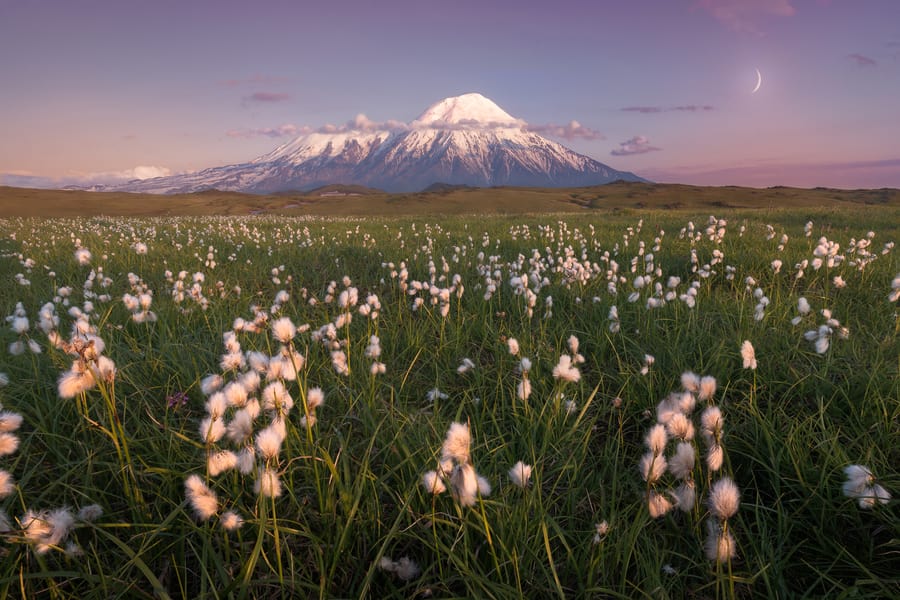
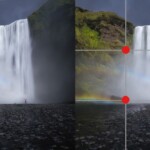



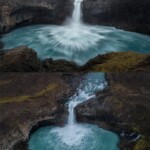

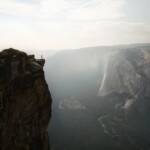
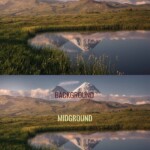



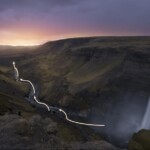
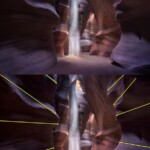

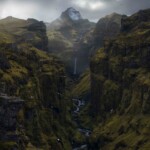

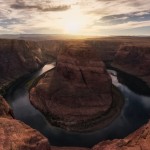
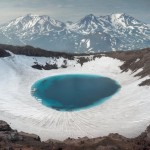

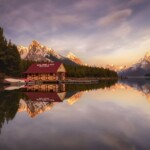
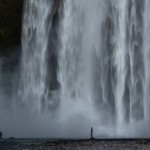





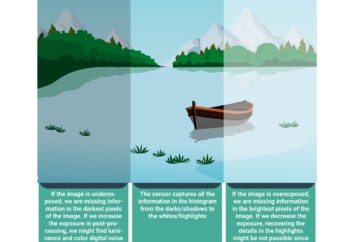








Hi Dan, everything you’ve posted here is gold for me. Thank you for trying to help those who are passionate about photography and more.
Thank you! I’m happy to see our articles are helping you with your photography 😉
Best,
Dan
Thank you Dan once again, your articles and the book have helped me to guide my school students and seniors viewer for whom we have a session online , I am from India and a passionate wildlife photographer, nearing 64 years I love to walk in the woodlands around my city. In the session, which are conducted online for the group members we talk on photography and deal with on subject every week for 30 minutes. These are free talks, as we want to encourage all to participate and appreciate the beautiful world we live in. Thank you for allowing us to share your pages and notes in our discussions. Regards
Arvind,
Thank you for your nice words and for sharing your experience with my ebook; I’m very happy to see that it’s helping many of your students and I’m sure there’ll be great photographers in the future!
Appreciate your nice words!
Dan
Hello Dan. Awesome synopsis of this subject. Simple and clear. I wish to thank you. In two weeks, I’m helping Vets with traumatic brain injuries on a photography tour in a local state park. This will help me to illustrate composition concepts and I can’t state how much I appreciate what you shared. Will return and let you know the outcome.
Again, thank you so much!
Thanks Karl for your nice words! Feel free to use our article to illustrate your tour with the Vets, I hope my images help to understand and learn a bit more about photography composition 😉
Please let me know how it goes!
Have a nice Photo Tour,
Dan
Great article Dan. I learned many new things.
Thanks!
Thanks Nels! Glad to see you enjoyed and found our composition article useful!
Happy Captures!
Dan